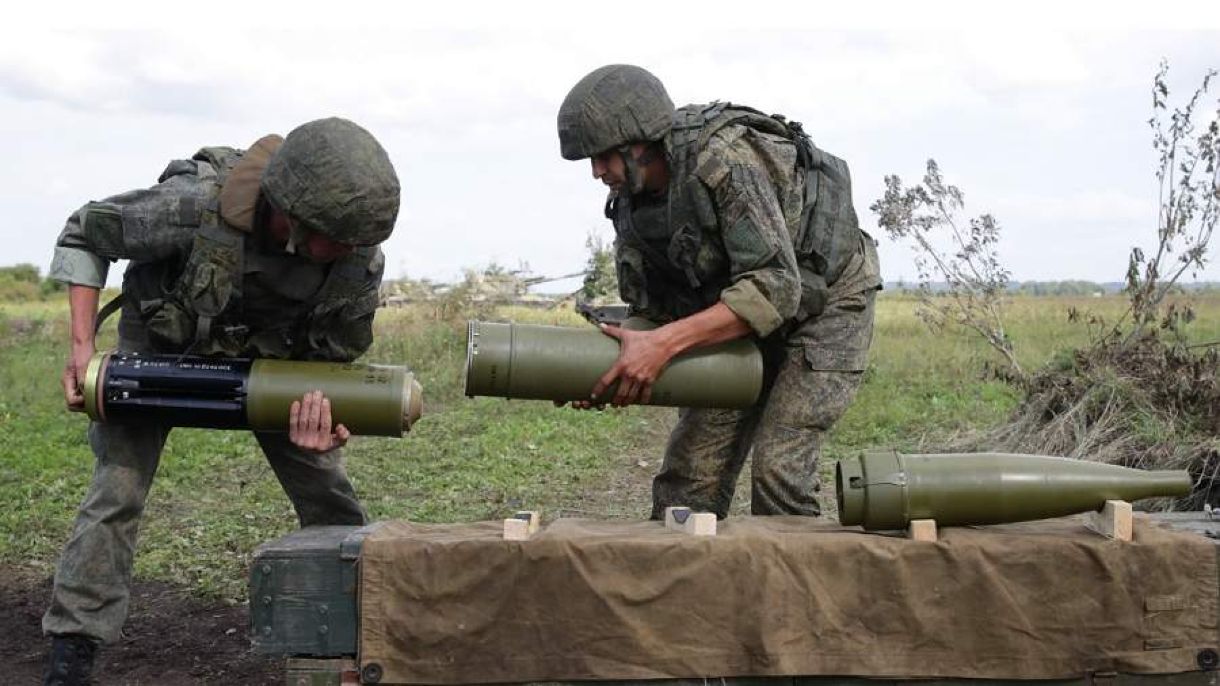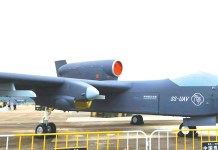Russian defense commentators and state media are promoting special artillery ammunition called Krasnopol that is claimed to be able to destroy US Abrams and German Leopard Main Battle Tanks (MBT).
Touted as Russia’s own Excalibur round, it has recently been featured in promotional videos, hitting Ukrainian fortified command centers and armored targets.
Based on comments from Western and European officials, the tanks will be available only in the next three months, by which the nature of the war must have changed.
Russia has already introduced the T-90M Provy MBT and an advanced ‘M’ version of the Ka-52 Alligator attack helicopter.
Artillery Round That Acts Like A Missile?
Krasnopol is an adjustable artillery ammunition of 152mm caliber, specifically designed to destroy targets in the first shot, with a host of novelties like aerodynamic control surfaces, a homing head, a laser seeker, and gas propulsion at the bottom.
The details and nature of the last feature are, however, unclear, but likely nevertheless. It could be a ‘base bleed’ system that expels gas in the low-pressure area behind the shell to reduce base drag.
These features aid in minimizing the usage of a large amount of artillery ammunition to get a hit on a target. Naturally functioning in a top attack mode like many Anti-Tank Guided Missiles (ATGM), the round is in line with the established practice of using artillery for anti-armor roles.

Artillery units carrying less ammunition also have resultant logistical and transport benefits, the chief being less vulnerable to enemy fire on supply lines.
The aerodynamic rudders assist in changing directions (or perform ‘corrections’) mid-flight in the final flight leg of its trajectory, guided by a laser marker on the target. The claimed gas-based thruster and aerodynamic surfaces maintain a range of 20 kilometers.
The main advantage of the projectile is the presence of a homing head and the consequent ability to aim at an illuminated target with minimal deviation. This increases the likelihood of the target being hit by the first shot, regardless of the range. Unlike many satellite-guided projectiles, Krasnopol can hit moving targets.
Stationary targets have an 85-95% probability of being hit, while there is a 70% success hit likelihood of striking a moving target at a speed of up to 30 kilometers an hour.
Heavily Promoted
The Russian Ministry of Defense (MoD) featured the Krasnopol round in its publicity material on January 23. It showed crews of a 152mm Msta-B howitzer of an artillery unit from the marines of the Pacific Fleet.
Russian soldiers “continue to destroy strongholds, firepower, and manpower of the Armed Forces of Ukraine in the zone of a special military operation,” said a statement from the MoD.
“Pacific Fleet artillerymen use the Krasnopol corrected ammunition, equipped with a semi-active laser homing head. On the descending part of the trajectory, the head searches for a target illuminated by a laser designator. Guaranteed hitting the target with a deviation of no more than a few meters is provided, regardless of the firing range,” the statement said.
This was followed by a video of a hit on what the MoD claimed was a prominent Ukrainian ground forces, command, and communications headquarters on January 26 in Ugledar.
The command center was located in a building near the fire station on the northern outskirts of the city – a common practice Russians allege Ukrainians employ. Basing military formations and equipment near civilian infrastructure increases the chances of collateral damage that can be used to criticize Russia.
Interestingly, it was detected by emissions from the Starlink satellite internet communication terminal antenna identified by Zhitel and Svet-KU electronic warfare equipment, according to a comment on a Russian Telegram group.
Russia has long led in Electronic Warfare (EW), and it won’t be far-fetched to imagine it has found a way to bypass the technology.
The command center collated and delegated all information from units of the Armed Forces of Ukraine’s (AFU) 72nd Mechanized Brigade, the 23rd Rifle Battalion, and territorial defense units both in the city’s depths and outside it. As a result of the strike, “special equipment for receiving and sending encrypted data was disabled,” the MoD said.
The Starlink-enabled communications center was also the third facility discovered in Ugledar and Pavlovka by Russian electronic warfare systems.
Russia Wields Its Own 'Excalibur' Round To Demolish Abrams & Leopard Tanks – The Maneuverable & Self-Homing Krasnopol pic.twitter.com/KWEGLBKYpZ
— EurAsian Times (@THEEURASIATIMES) February 3, 2023
Post-Cold War Invention
The basic version of the Krasnopol in 152mm caliber was developed at the end of the Cold War by the Tula Instrument Design Bureau (now called the AG Shipunov Design Bureau).
The project was launched in response to the introduction of the Copperhead high-precision artillery munition by the US military in 1982. The Soviet projectile was launched into mass production in the mid-1980s. In total, about 15 thousand units were manufactured.
The modernized Krasnopol-M projectile appeared in the post-Soviet years, followed by a further advancement called the Krasnopol-M2. Heavier than the basic version, it has a larger mass and warhead and can reach 25 kilometers.
The defining feature of the Krasnopol-M2 was the target coordinates embedded in the homing head, sparing artillerymen the very complex wind and ballistics calculations to ensure that conventional projectiles hit accurately.
Its primary advantage over the US Excalibur round is the absence of dependence on navigation signals from the Global Positioning System (GPS), which can be jammed.
- The author can be reached at satamp@gmail.com
- Follow EurAsian Times on Google News




